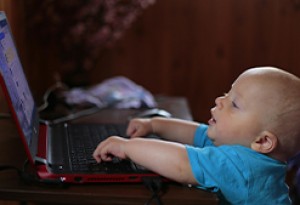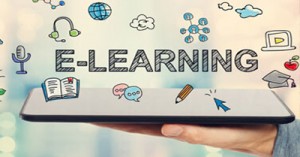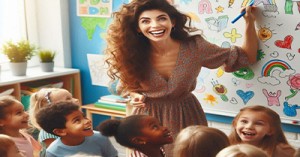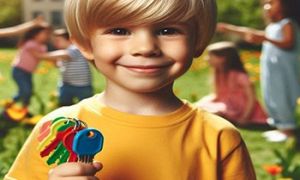Quality Area 1 of the National Quality Standard focuses on ensuring that the educational program and practice of educators are child-centred, stimulating and maximising opportunities for enhancing and extending each child’s learning and development. The following is a list of outcomes under each element within QA1, that can help services identify if they are achieving Quality Area 1. It also includes documentation to support each element. This list can be used as a guide for Self-Assessment purposes and the development of the Quality Improvement Plan.
It recognises that a quality program that builds on children’s individual knowledge, strengths, ideas, culture, abilities and interests is likely to have long-term benefits for children and for the broader society.
In all settings, the approved provider, nominated supervisor and educational leader are responsible for ensuring that programs for all children are based on an approved learning framework and delivered in accordance with that framework.
Each standard and element is represented by outcomes that contribute to the standard being achieved within the service.
1.1 - The educational program enhances each child’s learning and development.
1.1.1 - Curriculum decision-making contributes to each child’s learning and development outcomes in relation to their identity, connection with the community, wellbeing, confidence as learners and effective as communicators.
This can be achieved by:
• educators talking explicitly about phonological concepts, such as rhyme, letters and sounds when sharing texts with children
• engaging children in discussions about symbol systems, such as letters, numbers, time, money and musical notation
• supporting children to contribute constructively to mathematical and scientific discussions and arguments
• engaging children in the exploration of creative arts such as musical rhythms or beats, or lines or shapes in visual arts
• using everyday events as a basis for children’s exploration and learning about nature and science
• engaging children in singing songs and playing with words and sounds
• supporting children to convey and construct messages with purpose and confidence, building on home/family and community languages
• building vocabulary, having language-rich communication exchanges between educators and children
• promoting expressive aspects of children’s language
• educators supporting children to be independent communicators who initiate English and home-language conversations, and who listen, respond and engage in conversation
• educators providing a literacy-enriched environment that includes displaying
• print in home languages and in English
Documentation to support this includes:
• documentation that has been gathered in a variety of ways about children’s progress towards the learning outcomes and planning that establishes further learning goals
• documented programs that include planned experiences and/or strategies to support individual children’s goals
• documented programs demonstrating that an assessment of the learning outcomes has led to goals being identified for the group of children that are designed to intentionally support aspects of learning
1.1.2 – Each child’s current knowledge, strengths ideas, culture, abilities and interests are the foundation of the program.
This can be achieved by:
• observing, listening and talking with children for sustained periods of time and paying close attention to what they are saying, thinking and doing
• demonstrating flexibility in program delivery to incorporate children’s ideas, culture and interests to ensure that experiences are relevant and engaging
• integrating children’s emerging ideas to support their participation in the program demonstrating that they know each child’s individual learning style, temperament and interests
• children initiating and contributing to play experiences that emerge from their own ideas and interests
• children repeating, revisiting and adding to projects or experiences that they have initiated
• children developing strong foundations in the culture and language of their family and in that of the broader community, without compromising their cultural identities
• children indicating their deep involvement in experiences that are rich and meaningful to them through verbal and non-verbal responses, and sustained concentration
• children exploring ideas and theories in play by using their imagination and creativity
• children engaging in play during long periods of uninterrupted time
Documentation to support this includes:
• examples of how educators plan programs that are responsive to children’s knowledge, strengths, ideas, culture, abilities and interests
• evidence that information about each child, their family, culture and community is collected and used to plan programs
• evidence that information about each child, their family, culture and community is collected and used to plan programs that promote children’s learning, development and wellbeing
1.1.3 – All aspects of the program, including routine, are organized in wants that maximized opportunities for each child’s learning.
This can be achieved by:
• children participating collaboratively in events and experiences and having opportunities to contribute to decisions
• children having opportunities to revisit and discuss their learning during routines
• children being given choices during routines and transition times
• children directing and initiating learning experiences
• children engaged in a range of play experiences throughout the day
• children having opportunities to extend their interests, experiences and activities, such as being able to continue working on a construction or artwork
• educators using all aspects of the program to undertake intentional teaching and support child-directed learning
• educators making decisions based on best learning outcomes for children rather than convenient options suited to educators
• educators planning and implementing transitions and routines that support individual children’s preferences and requirements
• educators minimizing the times during which children are expected to do the same thing at the same time, or to wait for long periods without engaging in play or interactions
Documentation to support this includes:
• policy documentation outlining routines and the written program, including examples of how educators plan programs that are maximising opportunities for learning
1.2 - Educators facilitate and extend each child’s learning and development
1.2.1 – Educators are deliberate, purposeful and thoughtful in their decisions and actions.
This can be achieved by:
• educators providing time, space and learning experiences that facilitate thoughtful and challenging conversations with children
• educators engaging with children by listening, showing interest and asking open-ended questions to encourage thinking and conversation
• educators using a range of communication strategies that involve explanations, speculation and problem solving
• educators collaborating with children to develop further knowledge and skills
• educators using teaching strategies that complement the goals they have for children’s learning
• educators providing instructional/intentional support to children during play, routines and transitions
• educators who are fully present and mindful of opportunities to provide children time and space to ‘be’
Documentation to support this includes:
• the written program
• team meeting minutes when intentional teaching strategies have been discussed
• documented examples of reflective practice
• planning documentation that identifies resources to support ongoing learning
• documentation that monitors children’s learning, wellbeing and engagement
1.2.2 – Educators respond to children’s ideas and play and extend children’s learning through open-ended questions, interactions and feedback.
This can be achieved by:
• educators intentionally scaffolding children’s understanding and learning
• educators making use of spontaneous ‘teachable moments’ to extend children’s learning
• educators responding to children’s learning dispositions by commenting on them and providing encouragement and additional ideas
• educators responding to children’s ideas and using their interests as a basis for further learning and exploration
• educators creating opportunities for peer scaffolding
• educators noticing children applying their learning in new ways or between different contexts and talking about this with them in ways that build their understanding
• educators modelling mathematical and scientific language and concepts
• educators using language associated with the creative arts
• educators joining in children’s play when invited, taking on a range of roles and co-constructing
• materials, such as signs that extend the play
Documents to support this includes:
• documented reflective practice
• documentation and monitoring of children’s learning, development, wellbeing and engagement
• project or inquiry work where children are given the opportunity to take the lead in an investigation or collaborate with peers, teachers, family members and other members of the community
1.2.3 – Each child’s agency is promoted enabling them to make choices and decisions that influence events and their world.
This can be achieved by:
• arranging play experiences, routines and the physical environment so that children have a range of opportunities to make choices about what they will do and how they will do it
• encouraging children to make choices and decisions
• acknowledging children as capable and competent, and encouraging them to act autonomously
• providing children with strategies to make informed choices about their behaviours
• incorporating children’s ideas and suggestions in planning and implementing experiences
• providing encouragement and displaying enthusiasm for children’s attempts to gain new skills and knowledge
• embracing and supporting play experiences initiated by children, motivating children to persist and extend their learning
• noticing and listening carefully to children’s concerns and discussing diverse perspectives of issues of inclusion and exclusion, and unfair behaviour
• encouraging children to direct their own play and leisure experiences with their peers
• children making choices and decisions about matters that affect them (for example, whether they wish to play inside or outside, whether they want to play with other children or play independently, whether they are ready to eat, whether they are thirsty, and whether they need to sleep)
• children openly expressing their feelings and ideas in their interactions with others
• children initiating play
• children beginning to display understanding and willingness to negotiate and share with others
• children showing leadership, making decisions and following directions given by other children
• children leading their learning, designing experiences and freely making choices about participating in experiences
• children actively participating in decisions that affect them, including their learning and leisure
Documentation to support this includes:
• the service’s philosophy statement that recognises children’s rights and describes their role in decision-making
• documented reflections that demonstrate changes in practice to support children’s agency
• work developed by children with minimal educator input
• use of open-ended resources and materials that allow children to express themselves (rather than using templates, stencils or resources that limit children’s capacity to create, interpret, experiment and explore).
1.3 – Educators and coordinators take a planned and reflective approach to implementing the program for each child.
1.3.1 – Each child’s learning and development is assessed or evaluated as part of an ongoing cycle of observation, analysis learning, documentation, planning, implementation and reflection.
This can be achieved by:
• observing and recording information about what children know, can do and understand in ways that do not interrupt children’s participation in their learning
• implementing the educational program based on program planning documentation
• educators being intentional in the strategies they use to plan leisure-based experiences to support children’s learning, development and wellbeing
Documentation to support this includes:
• information gathered about each child that shows that educators understand each child and their learning and development including their learning styles and any identified support for that child
• examples of children’s representation of their learning and other work is documented and displayed in sensitive and respectful ways
• examples of families and children having opportunities to comment on or provide feedback about the program
• documented analysis of each child’s learning and development, using the learning outcomes as points of reference, that assists in planning for each child information about what has occurred during the program so that families know the learning opportunities and experiences that have been offered to their children
• documented evidence of each child’s developmental needs, interests, experiences and participation in the program
1.3.2 – Critical reflection on children’s learning and development both as individuals and in groups, drives program planning and implementation.
This can be achieved by:
• working with children to document and reflect on their experiences and learning
• using a variety of methods, such as jottings, children’s comments and conversations, photographs and examples of children’s work, to assist their reflection on children’s experiences, thinking and learning
• focusing on adapting the program to include all children, rather than adapting a child’s routine or requirements to fit the program
• reflecting-in-action by changing or altering experiences which are not engaging children
• speaking briefly to one another during the day about aspects of practice that they have changed or need to change
• making brief notes when appropriate so that they can recall an aspect of practice that may be challenging them, or that they may have questions about
Documentation to support this includes:
• documentation that shows evidence of critical reflection, such as reflection journals or diaries
• documentation that reflects on all aspects of the program
• jottings about - the effectiveness of arrivals/departures, interactions, responsiveness and relationships with particular children, transitions and routines, planned experiences and spontaneous child-directed learning, incidental and planned group times, the environment and experiences provided, intentional teaching strategies, communication with colleagues and families, any other aspects of practice to prompt further thinking and discussion, the effectiveness of resources and equipment used, experiences and learning outcomes achieved, review of curriculum content and pedagogy
• if the service has a Strategic Inclusion Plan, how the service reflects on, adaptations made to reduce barriers to participation
1.3.3 – Families are informed about the program and their child’s progress
This can be achieved by:
• having conversations with families about their child
• verbally sharing positive observations with families about their child
• showing meaningful documentation to families about their child
• exchanging information with families about the educational program
Documentation to support this includes:
• documentation (such as a communication plan) that demonstrates that families have been consulted about how they would like to receive information about their child’s progress
• a range of strategies is being implemented to share information with families in
• meaningful and useful ways
• documented expectations about the ways educators share information with families such as through conversations, emails, phone calls, communication books, offering meetings at mutually convenient times
• documented expectations about how educators to record information from families
• transition statements for children transitioning to school
• the educational program, including planning and reflections for families about the experiences and learning that have occurred
• the educational program is displayed in an accessible location for families to view and understand documented information about each child’s developmental needs, interests, experiences, participation and progress that is shared with families
Please note that this is to be used as a general guideline only. Please read the Guide To The NQS for more detailed information of what is required for each standard.
Further Reading
How To Achieve Each Quality Area Within The NQS - The following is a list of all achievements under each 7 Quality Areas that can help services identify if they are achieving within each area. It also includes documentation evidence required to support each element. Please follow the links to read through each Quality Area.
FREE NQS Quality Areas Posters To Download - The following National Quality Areas Posters include a definition of the Quality Area and the standards for each.
The National Quality Standard and Elements - The following is a quick reference guide for educators that lists the standards and elements that apply to each quality area.
Exceeding Guidance For Quality Area 1 -The following guidance is provided to assist services and assessors to consider if practice demonstrates the Exceeding themes at the level required for a rating of Exceeding NQS. The indicators provided are not exhaustive, and services may demonstrate Exceeding level practice for Quality Area 1 in a variety of ways that suit their particular operating environment and approach to practice.
Reference:
New Guide To The National Quality Framework, Australian Children’s Education and Care Quality Authority.







 Here is the list of the EYLF Learning Outcomes that you can use as a guide or reference for your documentation and planning. The EYLF
Here is the list of the EYLF Learning Outcomes that you can use as a guide or reference for your documentation and planning. The EYLF The EYLF is a guide which consists of Principles, Practices and 5 main Learning Outcomes along with each of their sub outcomes, based on identity,
The EYLF is a guide which consists of Principles, Practices and 5 main Learning Outcomes along with each of their sub outcomes, based on identity, This is a guide on How to Write a Learning Story. It provides information on What Is A Learning Story, Writing A Learning Story, Sample
This is a guide on How to Write a Learning Story. It provides information on What Is A Learning Story, Writing A Learning Story, Sample One of the most important types of documentation methods that educators needs to be familiar with are “observations”. Observations are crucial for all early childhood
One of the most important types of documentation methods that educators needs to be familiar with are “observations”. Observations are crucial for all early childhood To support children achieve learning outcomes from the EYLF Framework, the following list gives educators examples of how to promote children's learning in each individual
To support children achieve learning outcomes from the EYLF Framework, the following list gives educators examples of how to promote children's learning in each individual Reflective practice is learning from everyday situations and issues and concerns that arise which form part of our daily routine while working in an early
Reflective practice is learning from everyday situations and issues and concerns that arise which form part of our daily routine while working in an early Within Australia, Programming and Planning is reflected and supported by the Early Years Learning Framework. Educators within early childhood settings, use the EYLF to guide
Within Australia, Programming and Planning is reflected and supported by the Early Years Learning Framework. Educators within early childhood settings, use the EYLF to guide When observing children, it's important that we use a range of different observation methods from running records, learning stories to photographs and work samples. Using
When observing children, it's important that we use a range of different observation methods from running records, learning stories to photographs and work samples. Using This is a guide for educators on what to observe under each sub learning outcome from the EYLF Framework, when a child is engaged in
This is a guide for educators on what to observe under each sub learning outcome from the EYLF Framework, when a child is engaged in The Early Years Learning Framework describes the curriculum as “all the interactions, experiences, activities, routines and events, planned and unplanned, that occur in an environment
The Early Years Learning Framework describes the curriculum as “all the interactions, experiences, activities, routines and events, planned and unplanned, that occur in an environment


